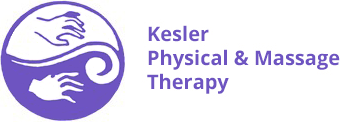The John F. Barnes’ Myofascial Release Approach® offered at Kesler Physical & Massage Therapy is considered to be the ultimate mind/body therapy that is safe, gentle and consistently effective in producing results in reducing pain, headaches, fibromyalgia symptoms, and increases range of motion and function.
According to Barnes’ teaching, trauma, inflammatory responses, and/or surgical procedures create Myofascial restrictions that can produce tensile pressures of approximately 2,000 pounds per square inch on pain sensitive structures that do not show up in many of the standard tests (x-rays, myelograms, CAT scans, electromyography, etc.)
“The medical approach is to drug patients so they temporarily are free from pain, but does nothing about the “strait-jacket” of pressure that is causing the pain,” Barnes teaches. “Traditional physical, occupational and massage therapy treats the symptoms caused by the pressure of the “straightjacket” of the Myofascial system, but does nothing about the “straightjacket” of pressure that causes and perpetuates the symptoms.
“This is why so many patients only have temporary results never seeming to get better with traditional therapy. Only Myofascial Release treats the entire Myofascial mind/body complex eliminating the pressure of the restricted Myofascial system (the straightjacket) that causes the symptoms.”
Using this technique, May Kesler has been able to assist patients when medicine, surgery or traditional therapy or massage did not produce the desired results.
For more information on myofascial release on the John Barnes website, go to: http://myofascialrelease.com/about/definition.aspx
What is myofascial pain?
When there is myofascial dysfunction, there is always a play between joint alignment and myofascial tension.
This effect is more pronounced in FM because the person hurts all over. In shoulder tendonitis, we can easily identify the dysfunction through avenues of muscle testing, range of motion, and palpitation.
But in FM, all muscle tests hurt, all ROM is compromised or hypermobile. Palpation takes a different skill because the person is weak, so some superficial muscles are lax and soft, but deep compensating postural and stability muscles (such as traps and scapular muscles, psoas and hip rotators) are overused and tight.
Since posture is so compromised and the nervous system hypersensitive and overstimulated, postural reflexes are overactive, creating more uneven unrelenting muscle tension. The overall picture can then be quite confusing to the unfamiliar practitioner.
The patient’s total body alignment and agility are essential to evaluate to assess functional levels. The body can be seen as a three-dimensional moving sculpture with varied textures and fluid movement. Each tissue in the body has differing inherent movement qualities, influenced by the tissues, organs and skeletal structures surrounding it, and the qualities and rhythms running through it.
Seen in this light, the patient's stance will reveal how a torque in the pelvis affects the use of the shoulder and head, how a twist in the neck echoes a twist in the knee. Unwinding these patterns takes not only neuromuscular relearning, but releasing of tensions in the physical and emotional being of the patient, using manual skills and careful teaching of exercise using new patterns of movement. The skill of the therapist is also used to assess when to make changes, when to accommodate dysfunctions that are too entrenched to change, and what area to unwind first, and when to stop.
This is perhaps an overload of concepts. To make it simple, I think of the system as a wrinkled sheet, and old injuries as pins holding the sheet down. I try to unwrinkle the sheet. But if I just unwrinkle the biggest wrinkle, and iron just that, the wrinkle spreads out. So I may have to pull the sheet by the corners, one at a time, and straighten it out, then start ironing again, straighten it out and so on.
This analogy demonstrates why there are other unusual pain connections in FM and other myofascial pain syndromes, and why conditions such as IBS can cause back pain. It also explains why myofascial release or trigger point injections or exercise or any modality alone won't alleviate the dysfunctions.
As the person heals, there are probably several sub-diagnosis which will reveal themselves. Weak tight areas from past injuries that were never resolved but compensated for, long standing patterns of postural imbalance, overuse etc., can mimic some symptoms of FM. Carpal tunnel, for example, always is affected by shoulder, neck and upper back restrictions, and can be influenced by imbalances through the whole body.
Bottom line - Try physical therapy first - with a whole person whole body approach!
Want to learn more? Ask May Kesler, MTH, PT, to speak at your next group meeting.
She is available for in office bodywork, exercise class, and ergonomic consultations for your staff's continued health.











